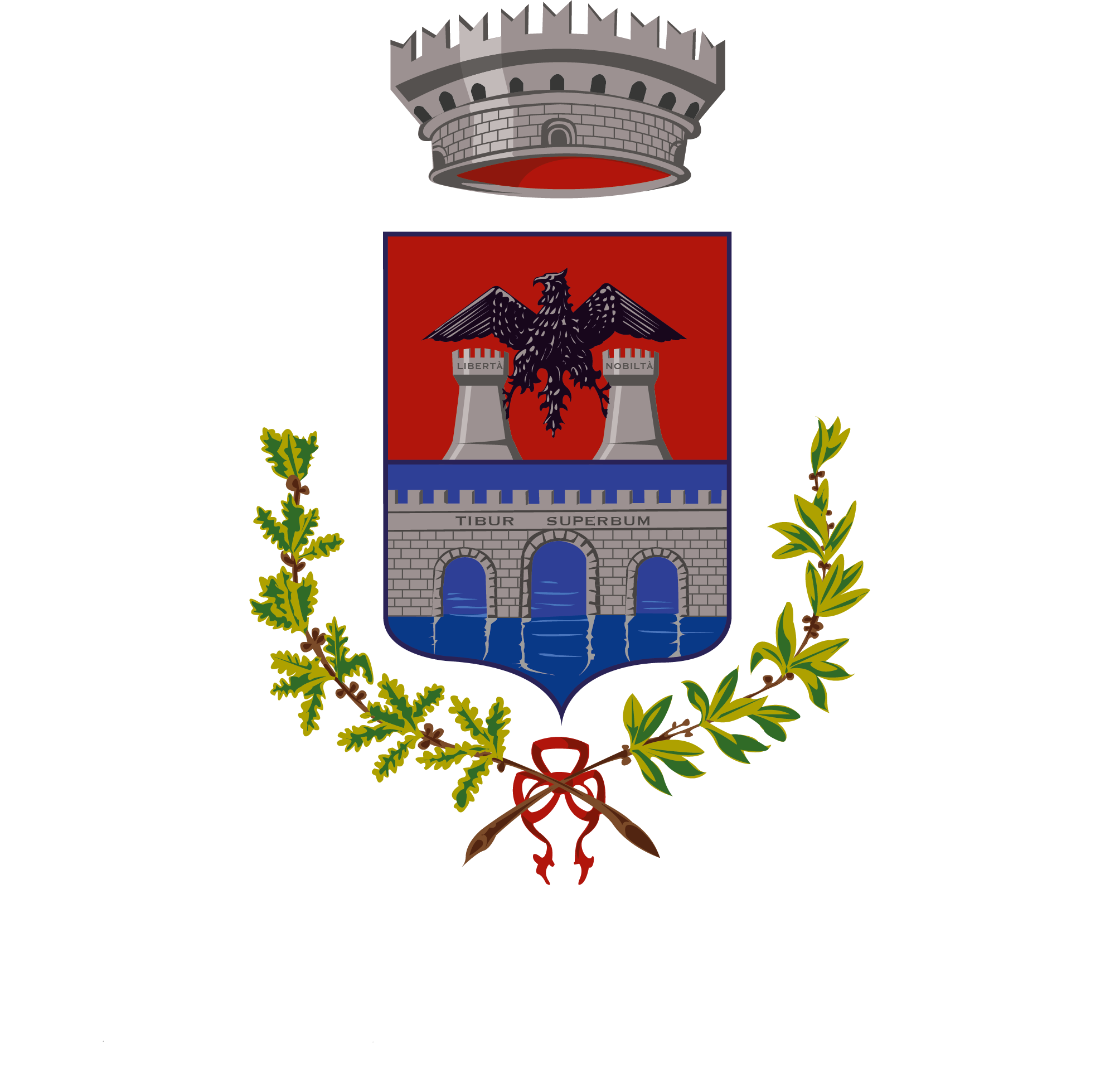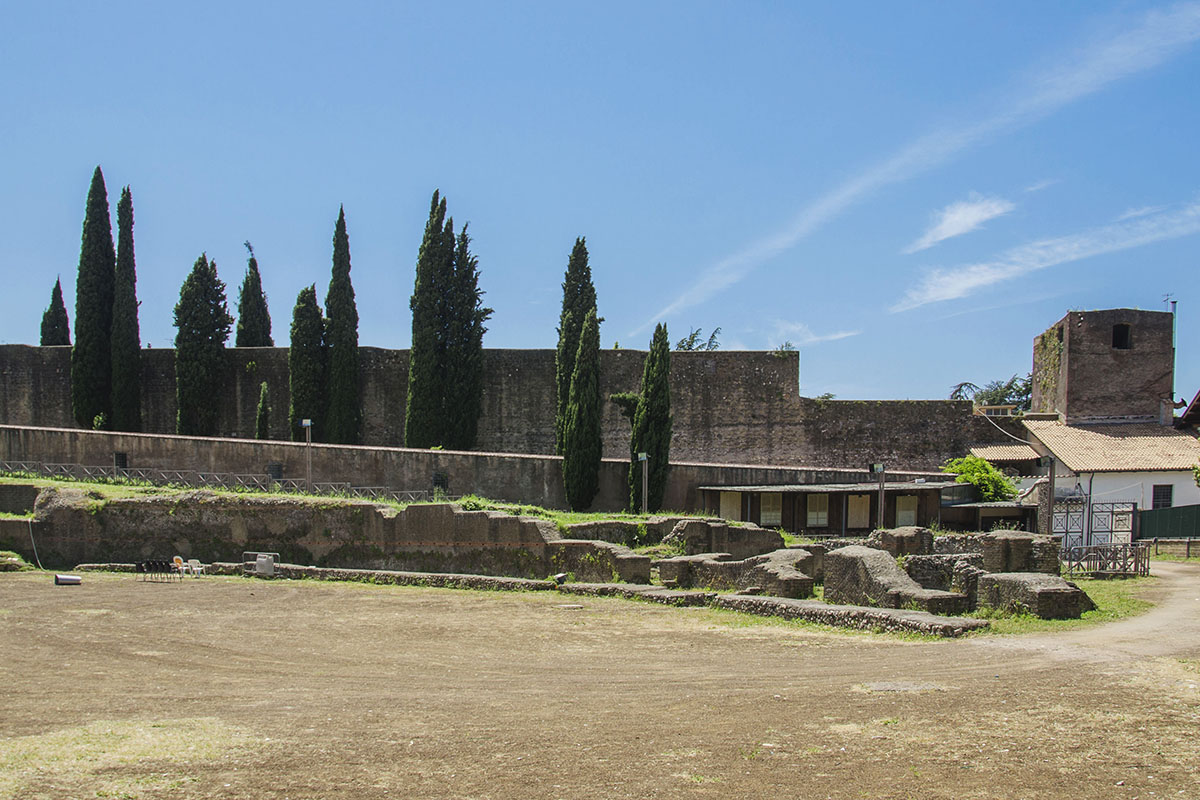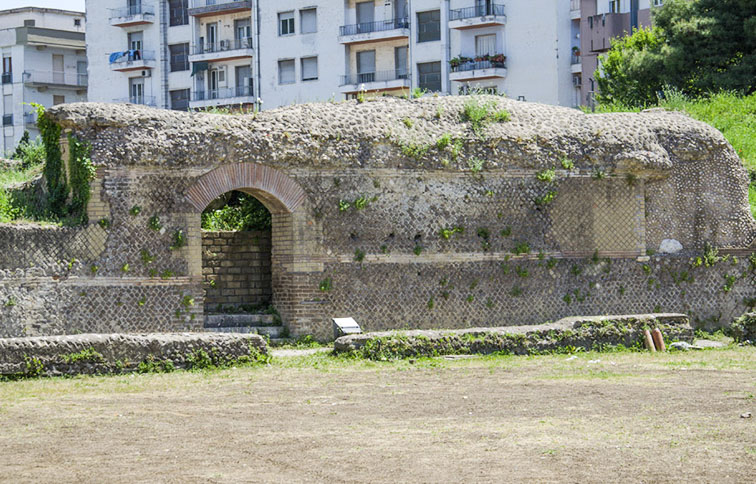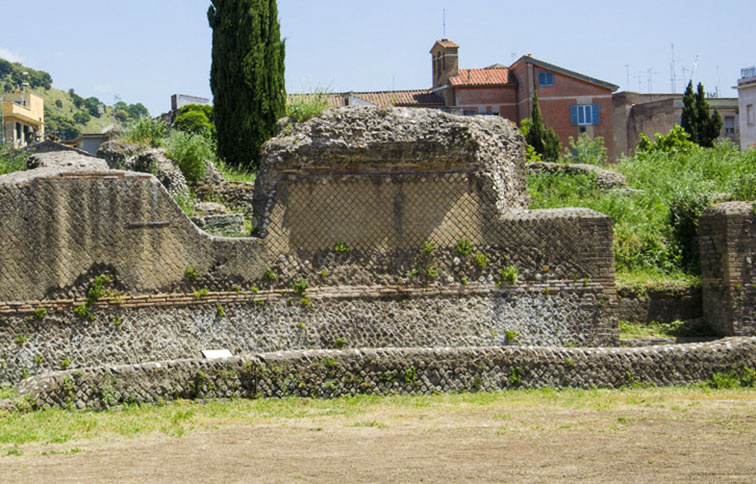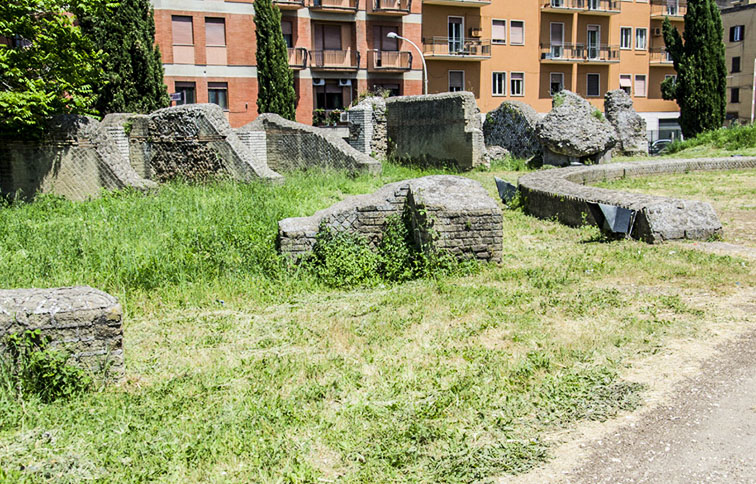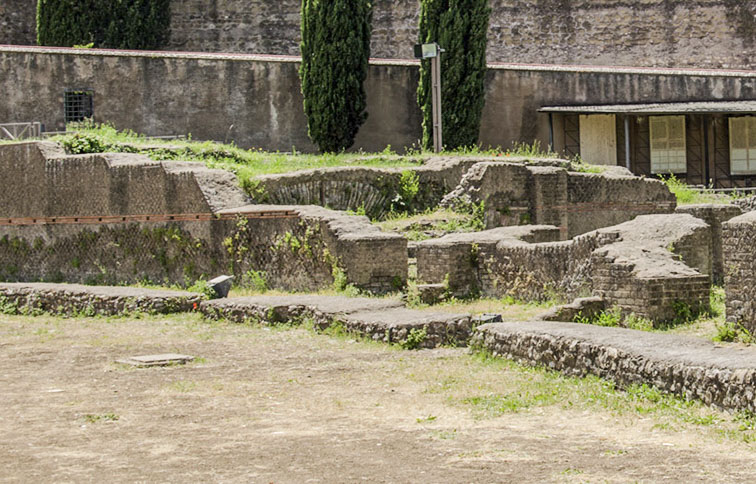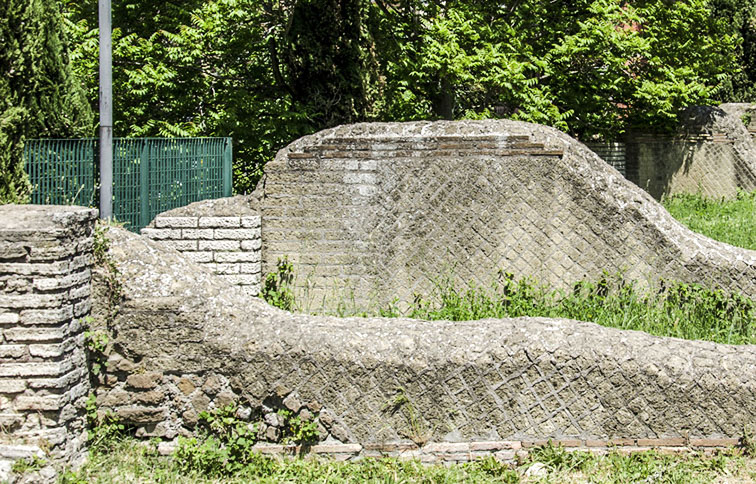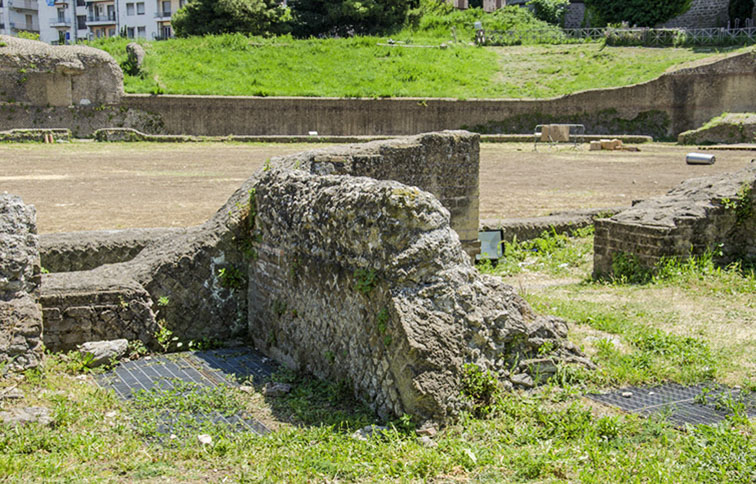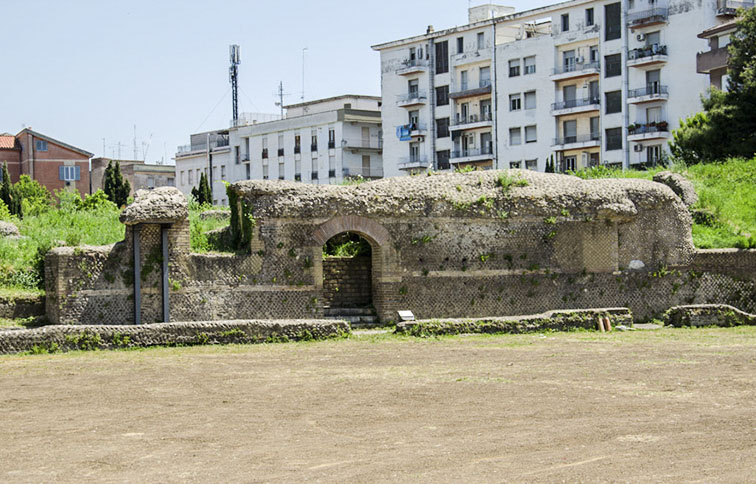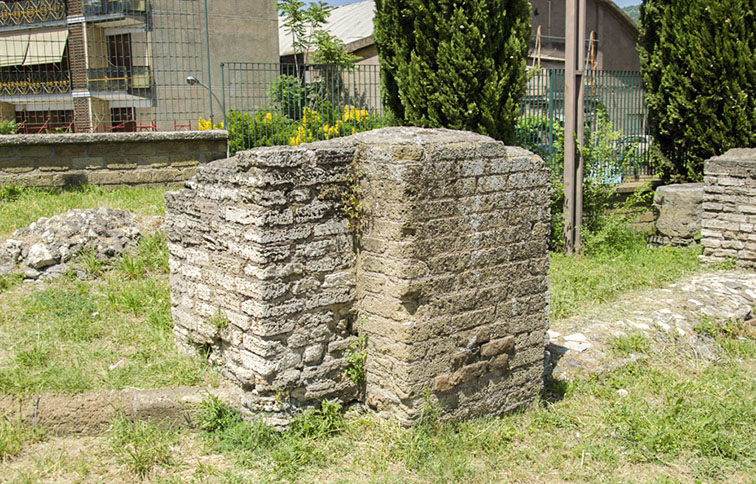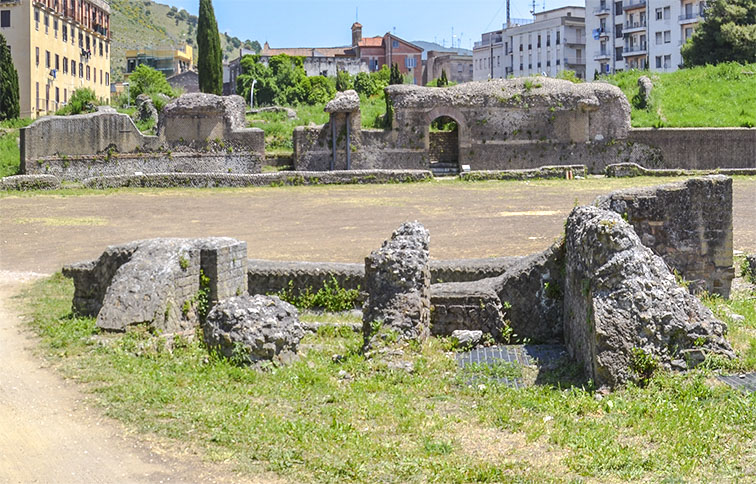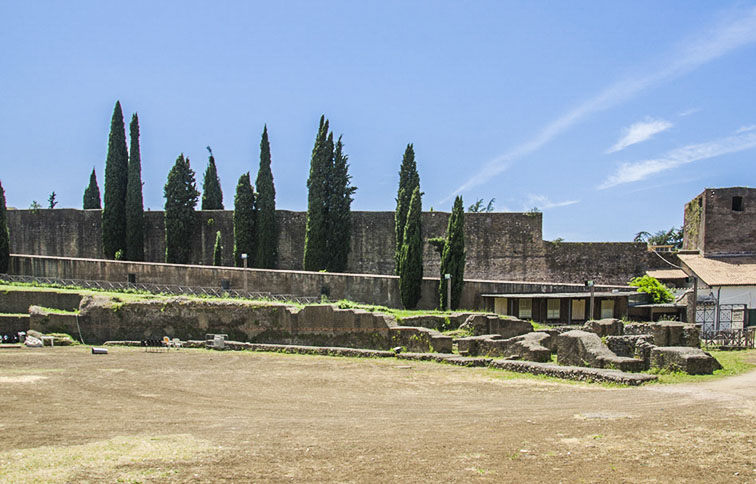Amphitheater of Bleso
The amphitheater of Bleso and Rocca Pia form a closely connected monumental complex, to be visited in a single itinerary. The amphitheater, built in the Hadrianic era, was partly destroyed when the fortress's construction began in 1461. Rediscovered in 1948 during the creation of one of the city's main arteries, the subsequent archaeological excavations revealed an ellipsoidal amphitheater formed by two curvilinear walls: the outer one constituted the facade, decorated with half-columns, the inner one the podium, which for safety reasons separated the cavea from the arena, so-called because it was covered with sand to cushion falls. Here, gladiator fights (munera) and battles between gladiators and wild beasts (venationes) took place. Below the podium ran the service ambulatory (corridor), covered with a barrel vault, against which radial walls that supported the cavea's stands were built, accommodating up to 6,000 spectators. The amphitheater had three main entrances, two at the ends of the major axis and one at the west end of the minor axis, connected by a paved road, the remains of which are still visible, while a service gallery ran under the arena, perhaps to give access to the cages (carceres) where the wild beasts used in the venationes were kept. This gallery continued outside the amphitheater, suggesting it connected the structure with a service area used by the gladiators as a gymnasium (ludus) or changing room (apodyterium). Today, the amphitheater can be seen from the walkways of Rocca Pia, for whose construction all the amphitheater's walls exceeding 3 m in height were demolished, which could have allowed enemies to hide among the ruins. In the amphitheater, artifacts from medieval and modern periods have been found, as well as fragments of cups and two molds from the ceramic class of factories operating in Tivoli in Roman times. These add to two inscriptions: the oldest, preserved in the National Roman Museum, dates back to the Hadrianic era and contains a dedication to M. Tullius Rufus, son of M. Tullius Bleso. It states that the latter had offered 200,000 sesterces and 200 days of labor for the inauguration of the amphitheater. The other inscription, preserved in the Antiquarium of the sanctuary of Hercules Victor in Tivoli, is dated July 24, 184 AD, and bears a dedication from the Tiburtes municipes to M. Lurio Lucreziano, patron of the municipality who, at the time of taking up the quinquennality, had held at his expense a show with twenty pairs of gladiators and a venatio, one of many that must have taken place in the amphitheater. The cessation of gladiatorial combats occurred around the first decades of the 5th century AD, while the venationes continued to be staged until the beginning of the 6th century.
How to reach it
